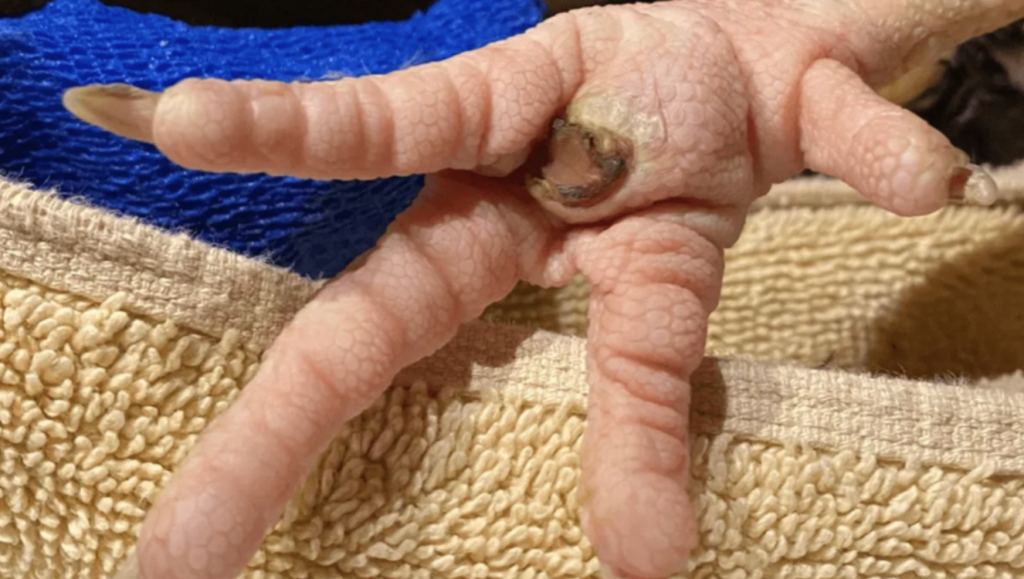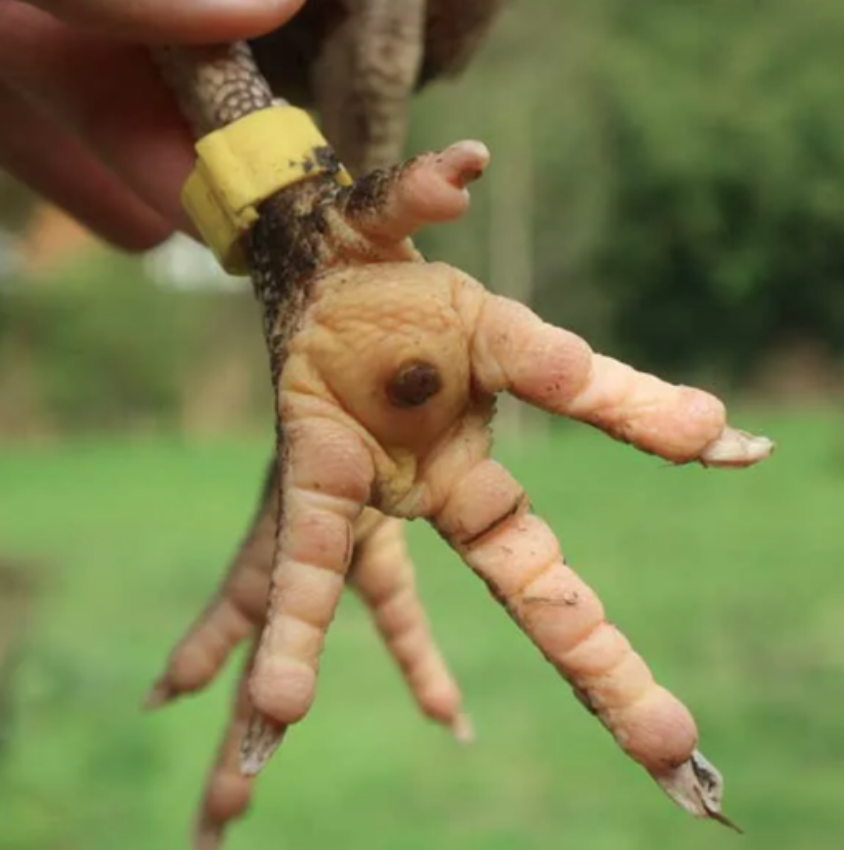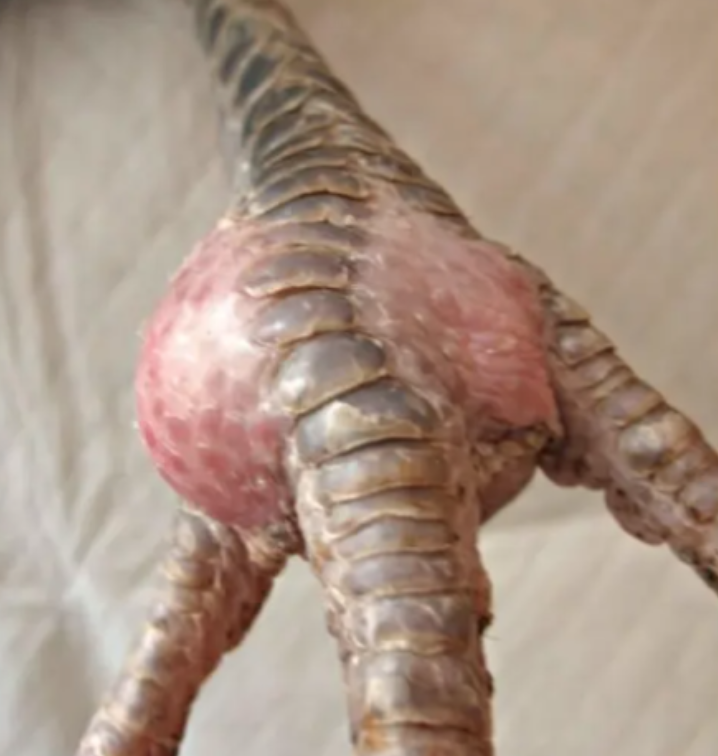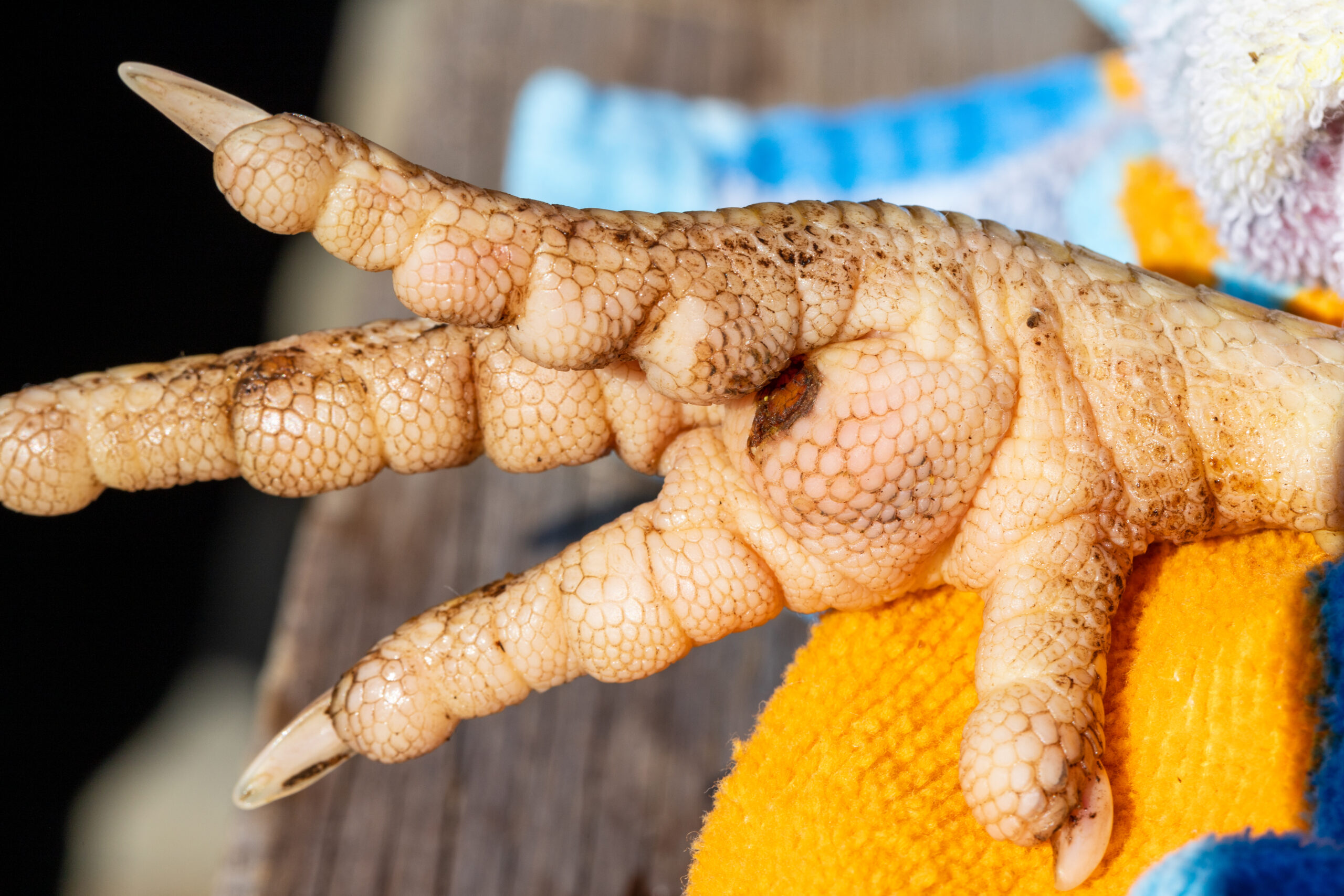Written by: Bria Osborne, OVC 2026
Edited by: Dr. Paisley Canning
What is bumblefoot?
Bumblefoot is a condition in poultry that is caused by the bacteria Staphylococcus sp. This bacterium can invade the foot by tiny cuts, injuries, or by tissue breakdown due to wet litter conditions, overweight birds, increased foot pressure and high perches (>18 inches).
The first signs of a bumblefoot infection are usually a chicken’s reluctance to walk and visible limping when it does (this is not always the case). Your chicken’s foot may look swollen and hot to the touch. The foot may also be red and have a characteristic brown or black scab on the bottom of the foot. Figure 1 and Figure 2 show the characteristic bumblefoot scab on the bottom of the foot.
Bumblefoot doesn’t always cause lameness, therefore, it is essential to do routine up-close inspections of your birds to ensure that no bumblefoot infections are festering on your birds’ feet.
Below are some images of bumblefoot (Figure 1, Figure 2, and Figure 3). Depending on the breed of bird, species of bird and severity of the bumble foot infection, it can look different between animals. Silkie chickens commonly get bumblefoot as they often have abnormal foot conformation. Don’t forget about our turkey friends too – bumblefoot can be common in adult older Toms that are large and in charge!

Photo Credit: Meyer Hatchery
Figure 1: An example of a bumble foot infection on the bottom of a chicken’s foot.

Photo Credit: British hen welfare trust
Figure 2: An example of a bumble foot infection on the bottom of a chicken’s foot.

Photo Credit: The Chicken Chick
Figure 3: This bumblefoot infection has spread and caused a joint infection.
Risk factors for a bumblefoot infection are:
- Poor perch design (chronic pressure or from landing from a perch that is too high)
- Poor litter conditions (wet, dirty, high ammonia, sharps e.g. splinters)
- Poor nutrition
- Obese birds
- Walking and scratching on hard, rough terrain
Left untreated, bumblefoot can cause tendonitis, arthritis, and osteomyelitis, leading to lameness. The infection can spread to joints (see Figure 3) and bones, resulting in death.
What can you do to help your chicken with bumblefoot?
Bumblefoot is a painful condition and requires pain medication and veterinarian oversight. Generally birds with bumblefoot need the following care:
- Warm water soak in epsom salts twice per day
- Gentle removal of the infected plug of tissue in the foot
- Supportive bandage to remove pressure from the foot
- Topical antibiotic
- Oral pain medication
- Oral or injectable pain medication for severe infections
Contact Dr. Canning if you suspect your chicken may have a bumblefoot infection. We are able to provide you with expertise and medications to help you treat your chicken with bumble foot. Also we sell bumblefoot kits that you can have on hand at your farm/house to provide first aid care to any chicken with bumble foot.
Does my flock have a bumblefoot problem?
Just like humans, birds can have accidents too. Therefore, a “one-off” bumblefoot infection is not considered out of the normal for a flock. However, having multiple birds in your flock with bumblefoot or having a bird that has had recurrent bumblefoot infections is an indicator that you should consult Dr. Canning about management practices.
You can contact the clinic at [email protected], or on facebook.com/upperthamesvs if you have any questions or concerns about bumblefoot in your flock.
References:
The chicken chick: https://the-chicken-chick.com/
The chicken health handbook by Gail Damerow
WeCAHN and CAHSS small flock poultry course (May 2023)

